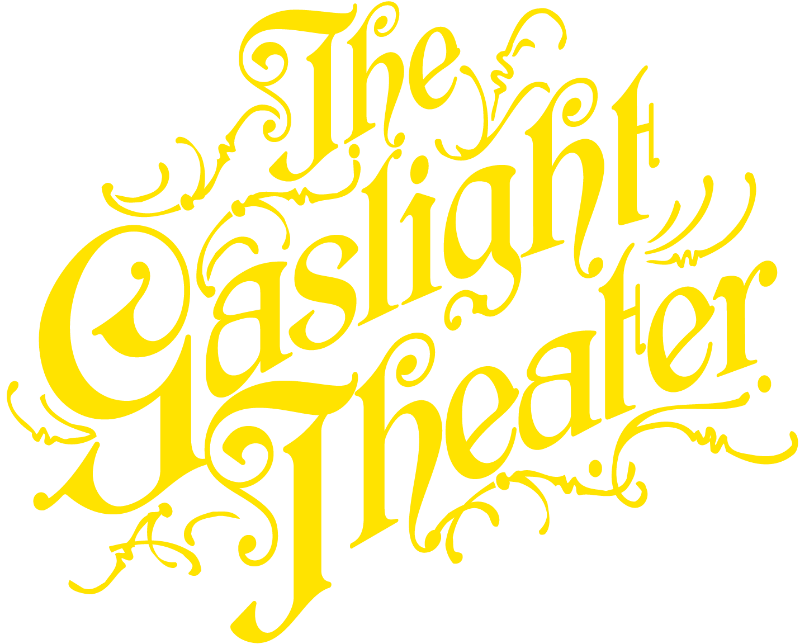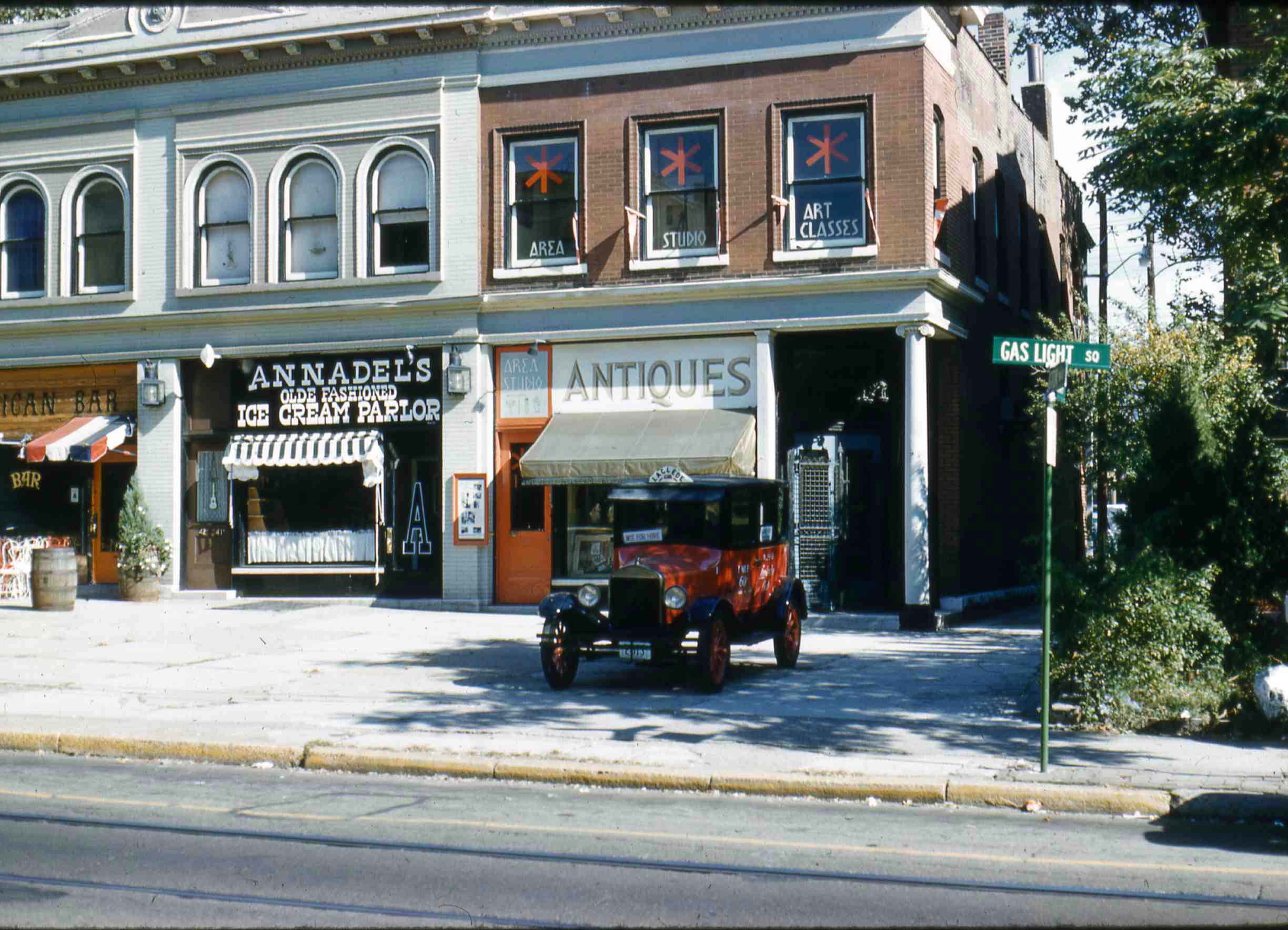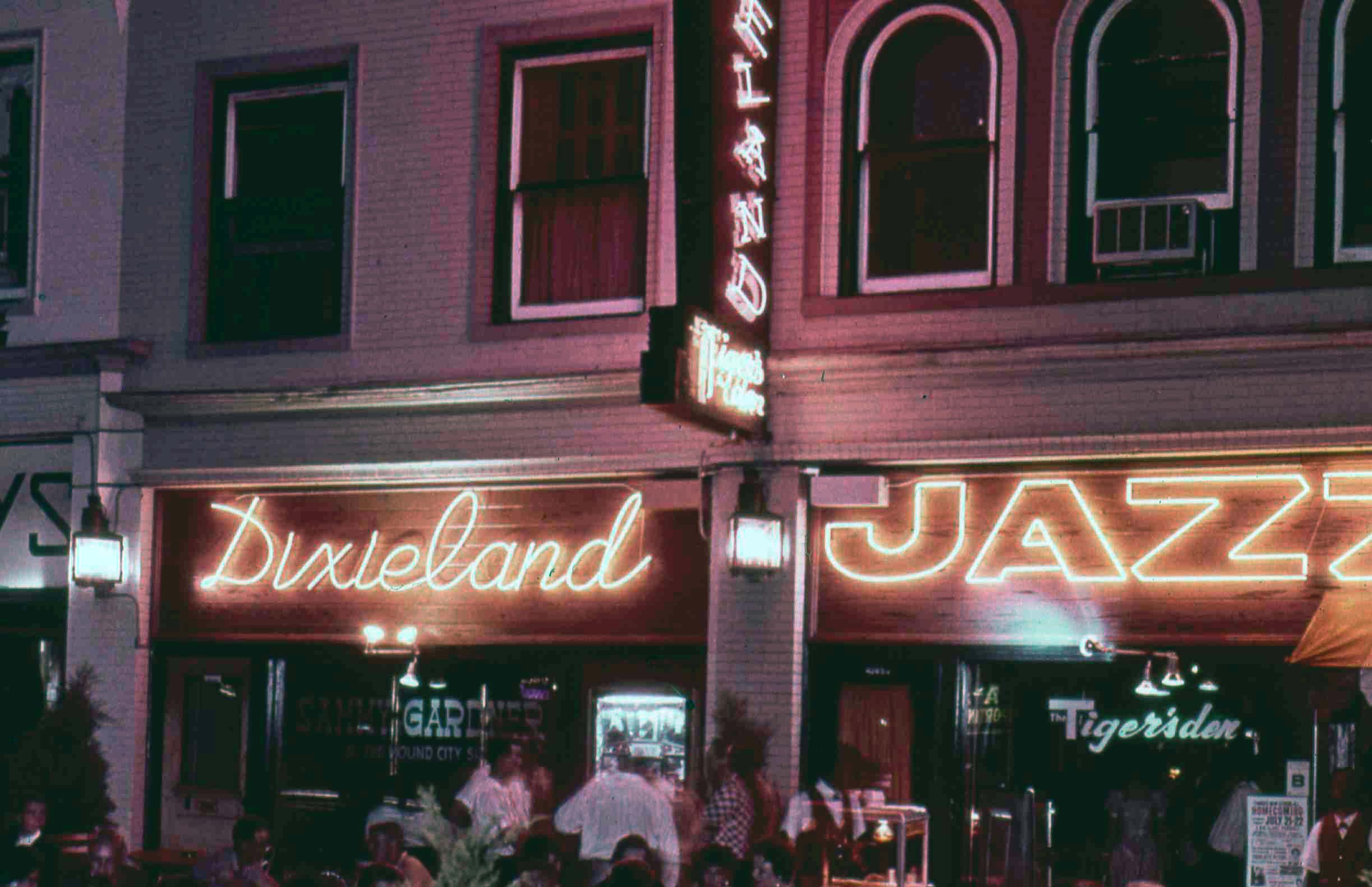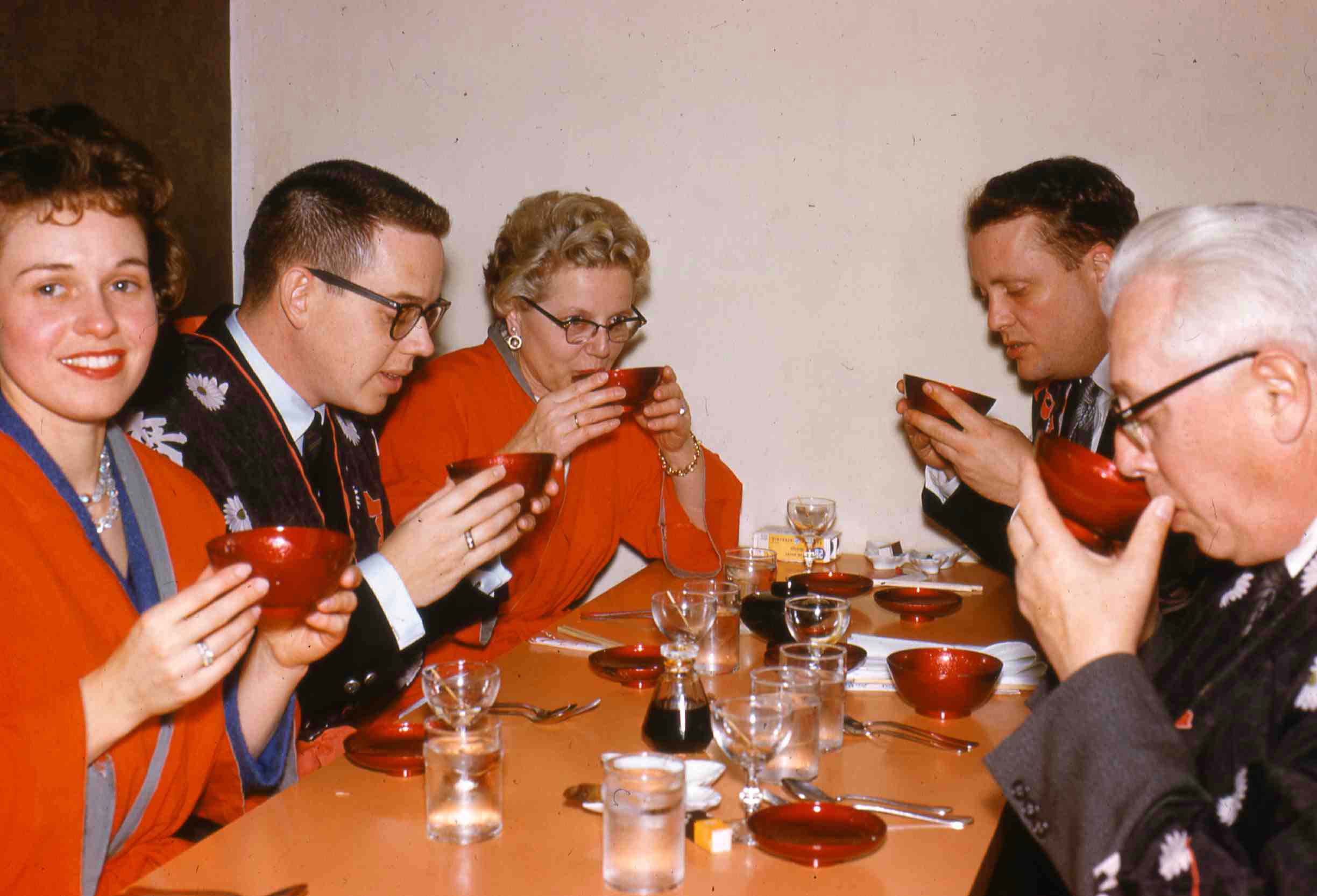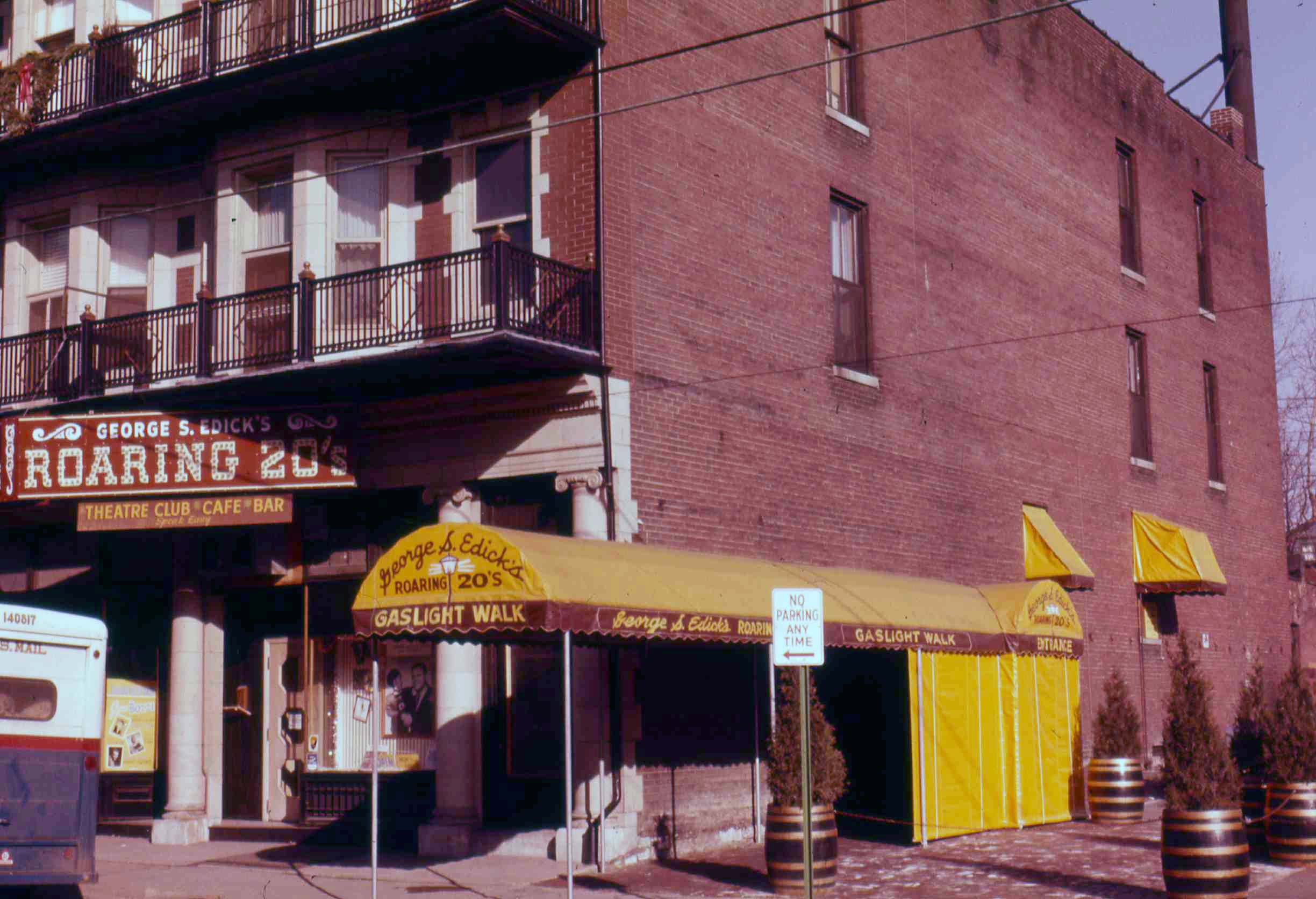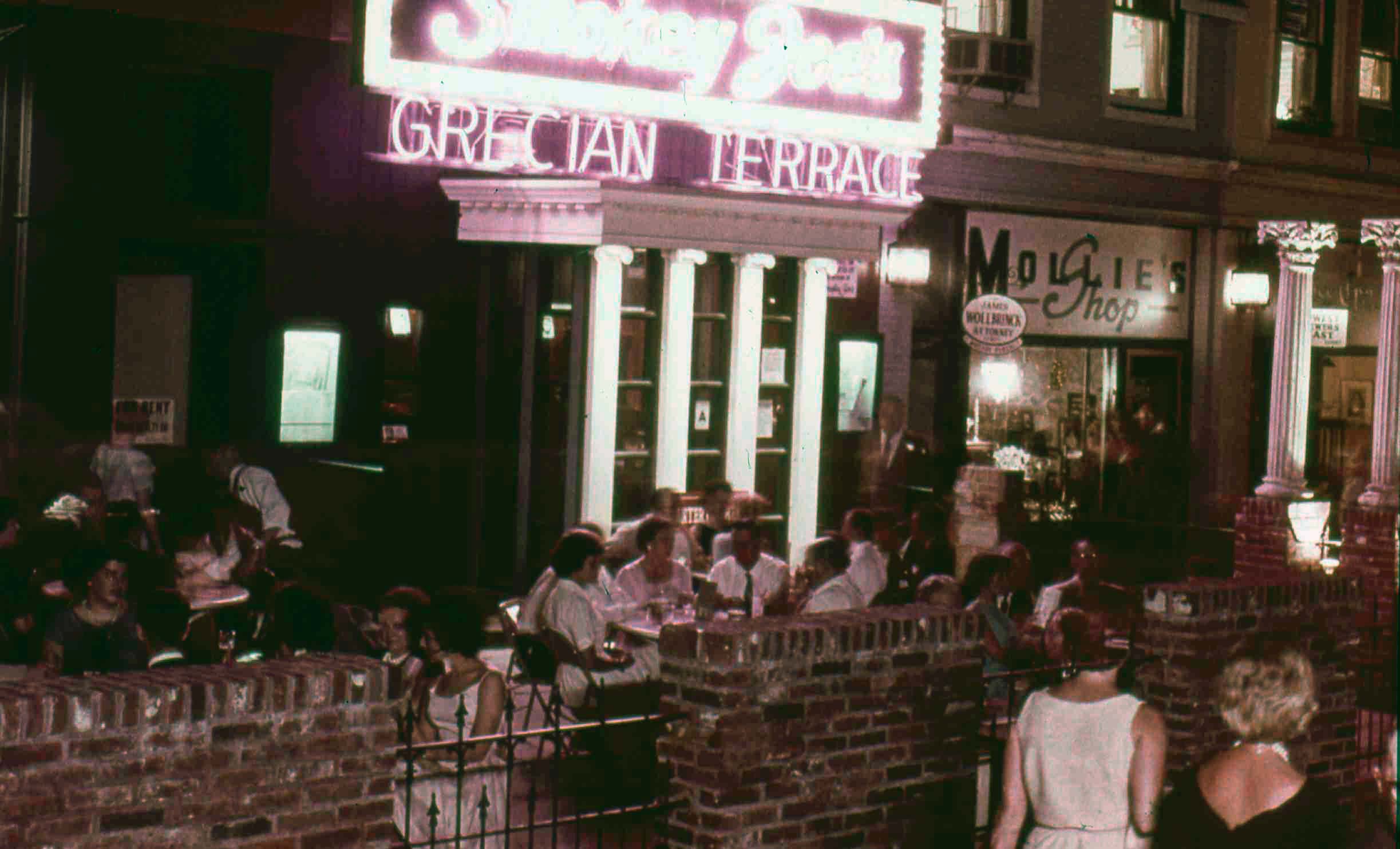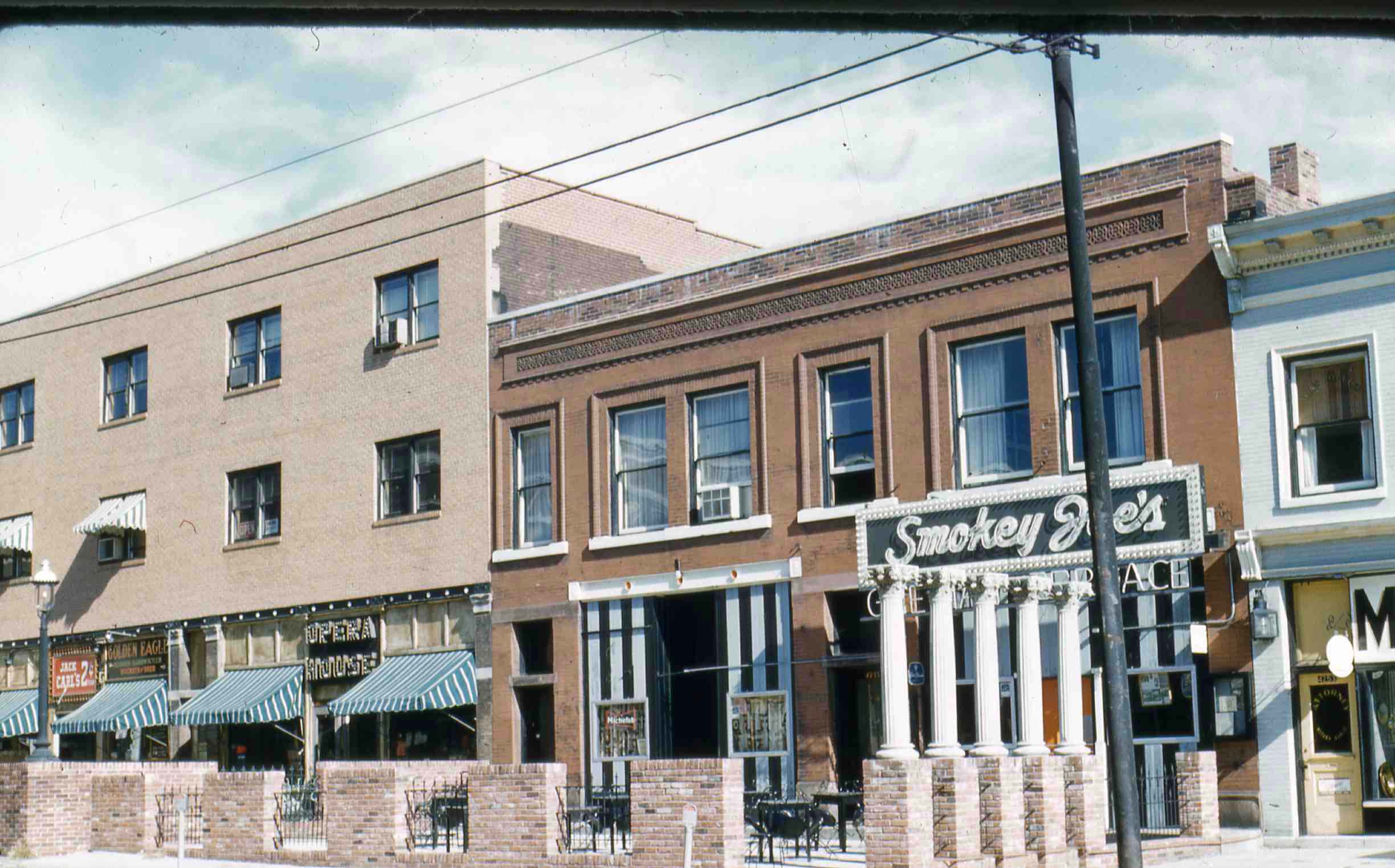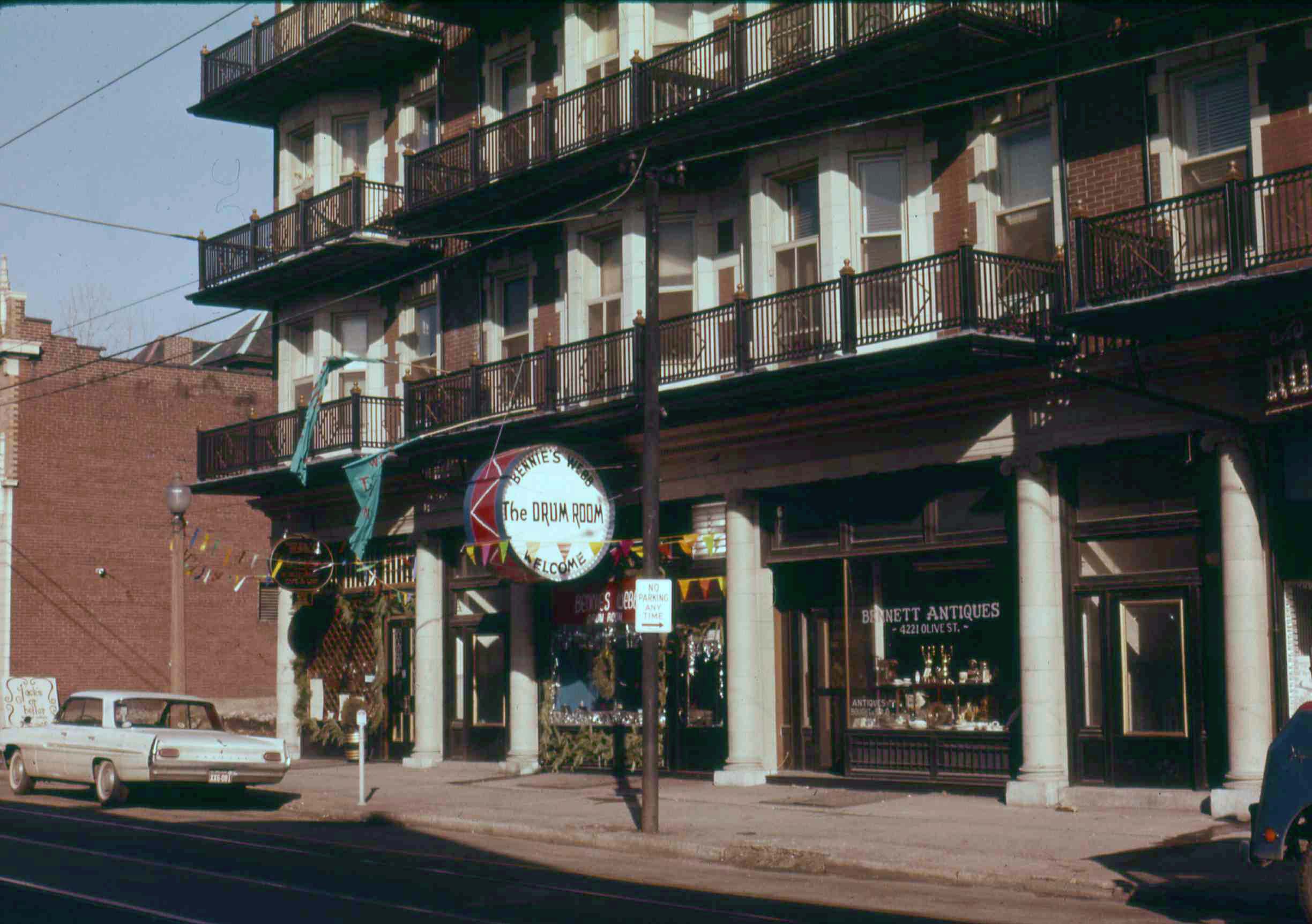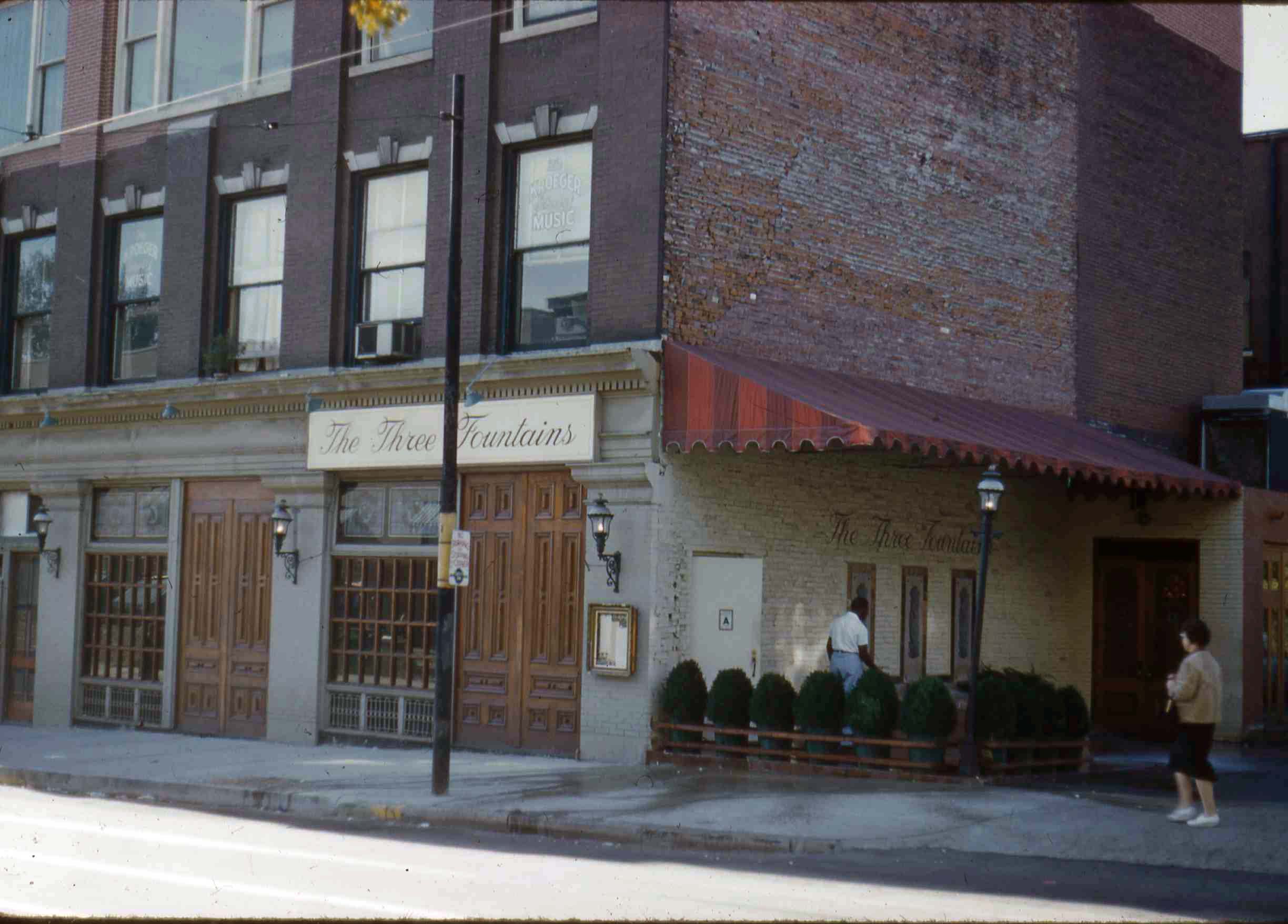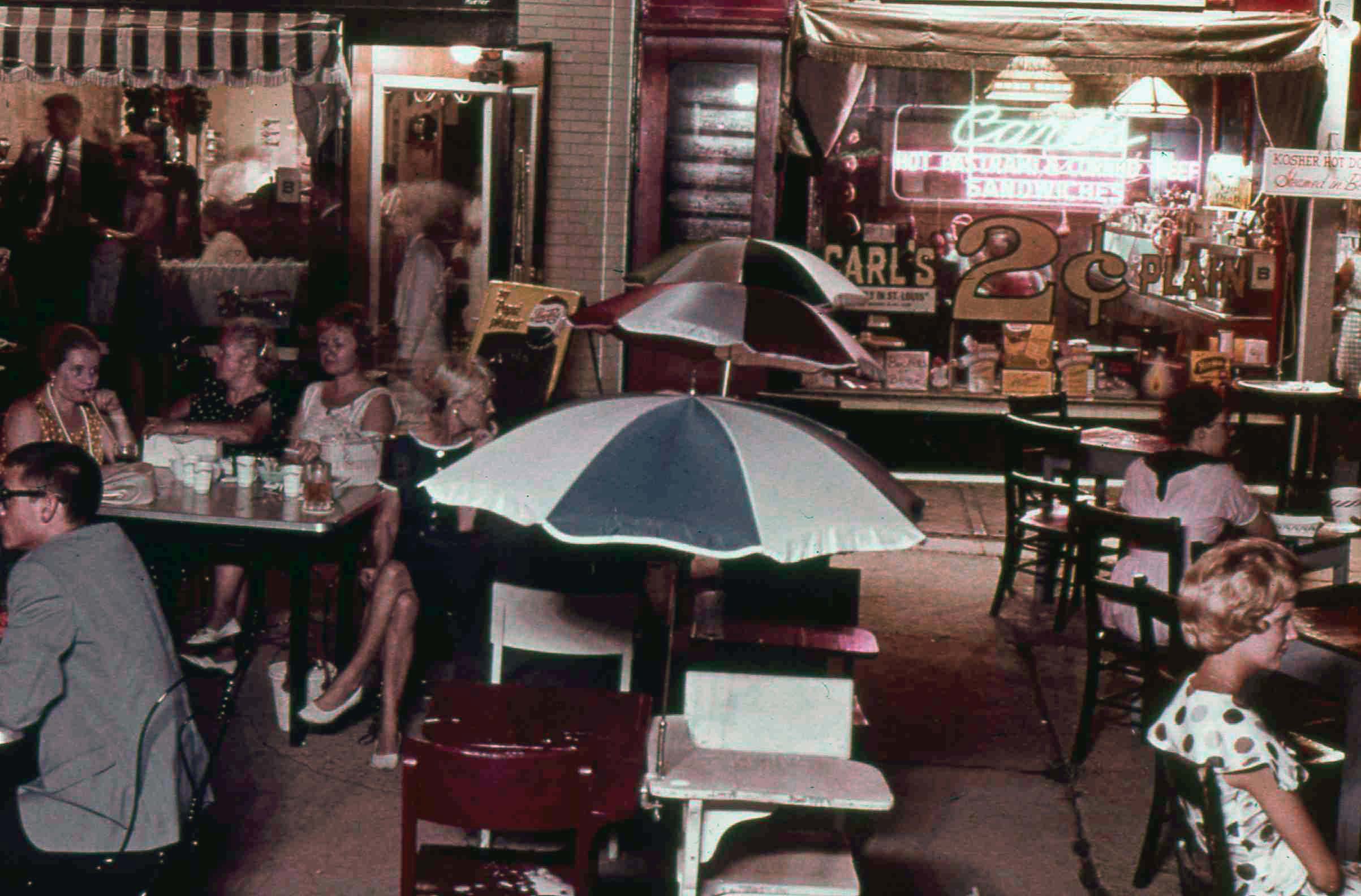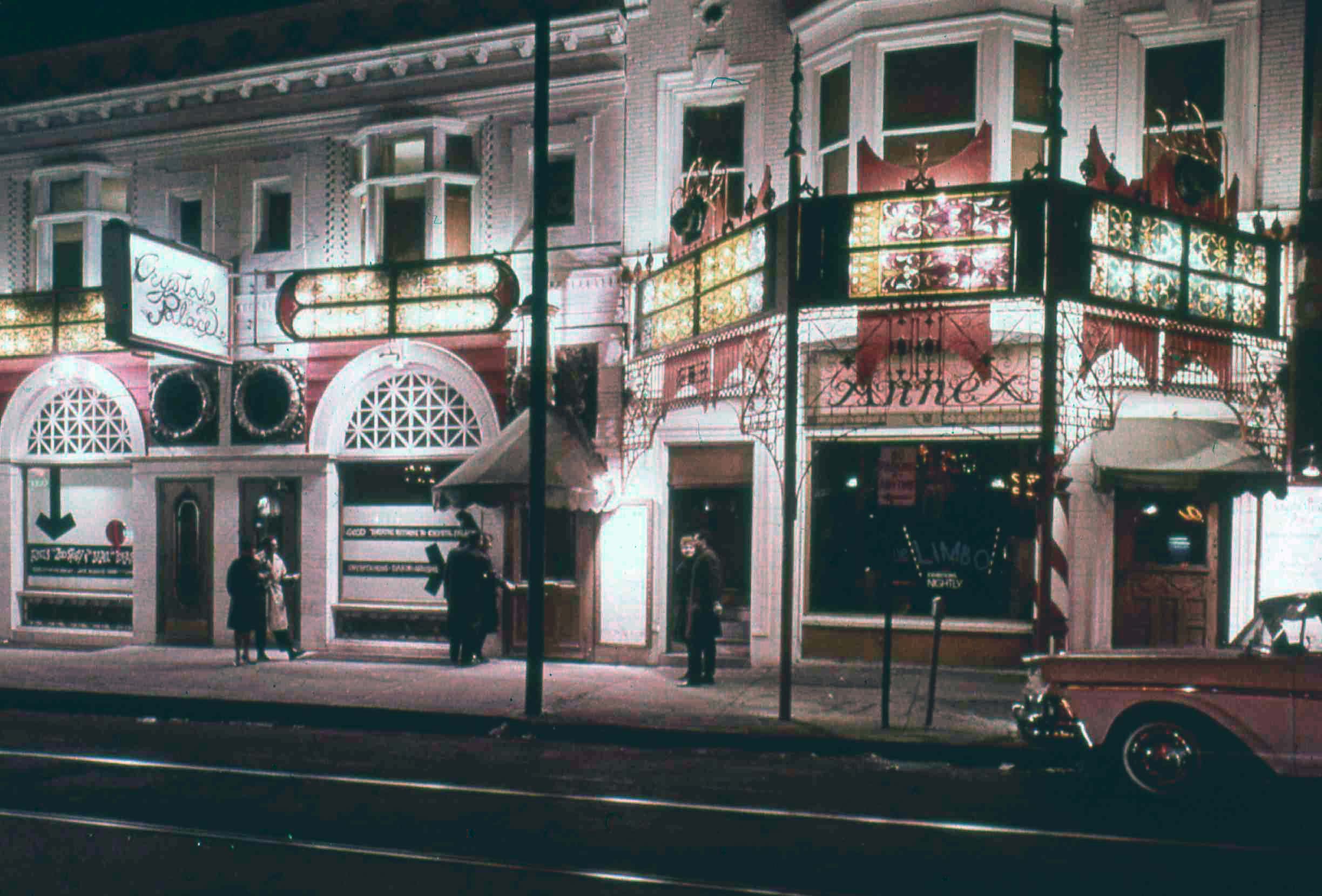History
Gaslight Square was the name given to the entertainment district built in the mid 1950s. The district was known for gaslights and ornate Victorian style architecture, reflective of the riverboat times around the turn of the century. Gaslight Square quickly became a thriving entertainment district that can be compared to Bourbon Street in New Orleans.
The Square occupies the area surrounding Olive and Boyle Streets in St. Louis' Central West End. The district was popular for music, poetry, great food, and dancing. It was the home to many clubs and restaurants, and entertainment venues.
Brothers Dick and Paul Mutrux are considered by many to be the pioneers of Gaslight Square, being proprietors of one of the first saloons in the area, the Gaslight. Another saloon, the Golden Eagle, soon opened, and proprietor Jay Landseman relocated his extremely popular cabaret theatre, the Crystal Palace, to the area as well. Early business owners in Gaslight Square raided recently demolished property in downtown St. Louis to salvage unique items such as church pews, chandeliers, recycled stained glass, and marble bathtubs.
These resourceful decorations gave Gaslight Square a youthful, eclectic feel that attracted young beatniks and wealthy customers alike. At its height, Gaslight Square was home to approximately fifty businesses, including taverns, cabarets, restaurants, sidewalk cafes, and antique shops. These businesses provided an array of unique entertainment that combined elements of the past and present. The Opera House had a façade covered in croquet balls and was a venue for Dixieland jazz. The Roaring Twenties was a speakeasy that included a stage show, mock raids, and staged gangster fights. The Natchez Queen was decorated to resemble a riverboat with live ragtime music inside. By 1962, property values had tripled in Gaslight Square.
The district was greatly affected by dramatic change in culture and music of the late 1950s and 60s when the bohemian and hippie generation began questioning traditional majority values in art, literature, and political self expression. The district attracted many poets and writers, such as Jack Kerouac and Alan Ginsberg who would stop in St. Louis to experience Gaslight Square.
Many entertainers such as The Smothers Brothers, Lenny Bruce, Miles David, Barbara Streisand, Jackie Mason, Mike Nichols and Elaine May, Woody Allen, Jerry Stiller, Dick Gregory and Jack E. Leonard gained exposure at the start of their careers in the clubs of Gaslight Square. Traditional jazz clubs in Gaslight Square included Peacock Alley, Opera House, Bustles and Bows and Tiger's Den. Modern jazz clubs included The Dark Side, The Other Side and Jogie's Hip Intertainment.
For more photos of Gaslight Square, visit our Gallery.
